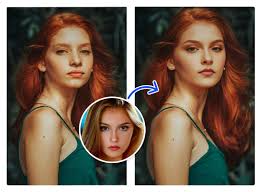
Mastering the Art of Face Swapping: A Professional’s Handbook
Face swapping has surged in popularity over recent years, transforming from a fun social media trend into a sophisticated skill utilized in marketing, entertainment, and creative arts. While it may seem simple, mastering face swapping requires an understanding of both technical skills and artistic finesse. This professional guide aims to provide you with an in-depth overview of the techniques and best practices for achieving seamless face swaps.
Understanding the Basics
Before diving into the intricacies of face swap, it’s crucial to grasp the fundamental concepts. At its core, face swapping involves replacing a person’s face in a photo or video with another face. This process can be accomplished through various methods, most commonly using digital editing software.
Choosing the Right Software
The first step in any face swap project is selecting the appropriate software. Many advanced digital editing tools offer face swapping capabilities. When choosing software, consider factors like ease of use, available features, and the level of control it provides. High-quality software often includes tools for facial recognition, blending, and color correction, which are essential for creating realistic swaps.
Preparing Your Images
Preparation is key to a successful face swap. Start by selecting high-resolution images where the faces are well-lit and facing forward. Consistent lighting and angles between the source and target images will significantly ease the blending process. Pay attention to the facial expressions as well; similar expressions will result in a more natural final image.
Mapping and Alignment
Mapping the faces correctly is one of the most critical stages. This involves aligning the facial features such as eyes, nose, and mouth to ensure they match perfectly. Many advanced tools offer automatic alignment features, but manual adjustments may be necessary for precision. Use grids and guides within your software to assist in aligning the faces accurately.
Advanced Techniques
Once you’ve mastered the basics, it’s time to explore advanced techniques to elevate your face swapping skills.
Blending and Seamless Integration
Achieving a seamless blend between the swapped face and the original image is paramount. Use tools like feathering and opacity adjustments to smooth out the edges. Pay close attention to skin tones and textures, making use of color correction and blending modes to match them precisely. Layer masks can also be incredibly useful in refining the edges and ensuring a natural look.
Expression Matching
For more professional results, it’s important to match the expressions of the swapped faces. Slight adjustments to the facial structure can make a significant difference. Utilize warp and transform tools to tweak expressions subtly, ensuring they align perfectly with the body language and context of the original image.
Lighting and Shadows
Consistent lighting and shadows are vital for creating believable face swaps. Adjust the lighting of the swapped face to match the original image using highlights and shadows. Tools like dodge and burn can help manipulate light and dark areas, creating a cohesive final image. Ensure that the direction and intensity of the light remain consistent across the entire image.
Practical Applications
Face swapping can be applied in various professional contexts, each requiring a tailored approach.
Marketing and Advertising
In marketing, face swapping can be used to create personalized advertisements that resonate with diverse audiences. By seamlessly integrating celebrity faces or relatable figures into promotional materials, brands can enhance their appeal and engagement.
Entertainment and Media
The entertainment industry frequently employs face swapping for movies, TV shows, and digital content. From creating special effects to age transformations, face swapping adds a dynamic layer of creativity to visual storytelling. Mastering this skill opens up numerous opportunities within the media sector.
Creative Arts
Graphic designers and digital artists use face swapping to push the boundaries of creative expression. By experimenting with different faces and compositions, artists can create captivating visuals that leave a lasting impact.
Conclusion
Mastering the art of face swapping is an invaluable skill for anyone involved in digital media, marketing, or creative arts. With the right tools, techniques, and attention to detail, you can create seamless and impactful face swaps that elevate your projects to a professional level. By continuously refining your skills and staying updated with the latest advancements in digital editing, you’ll be well-equipped to harness the full potential of face swapping in your professional endeavors.